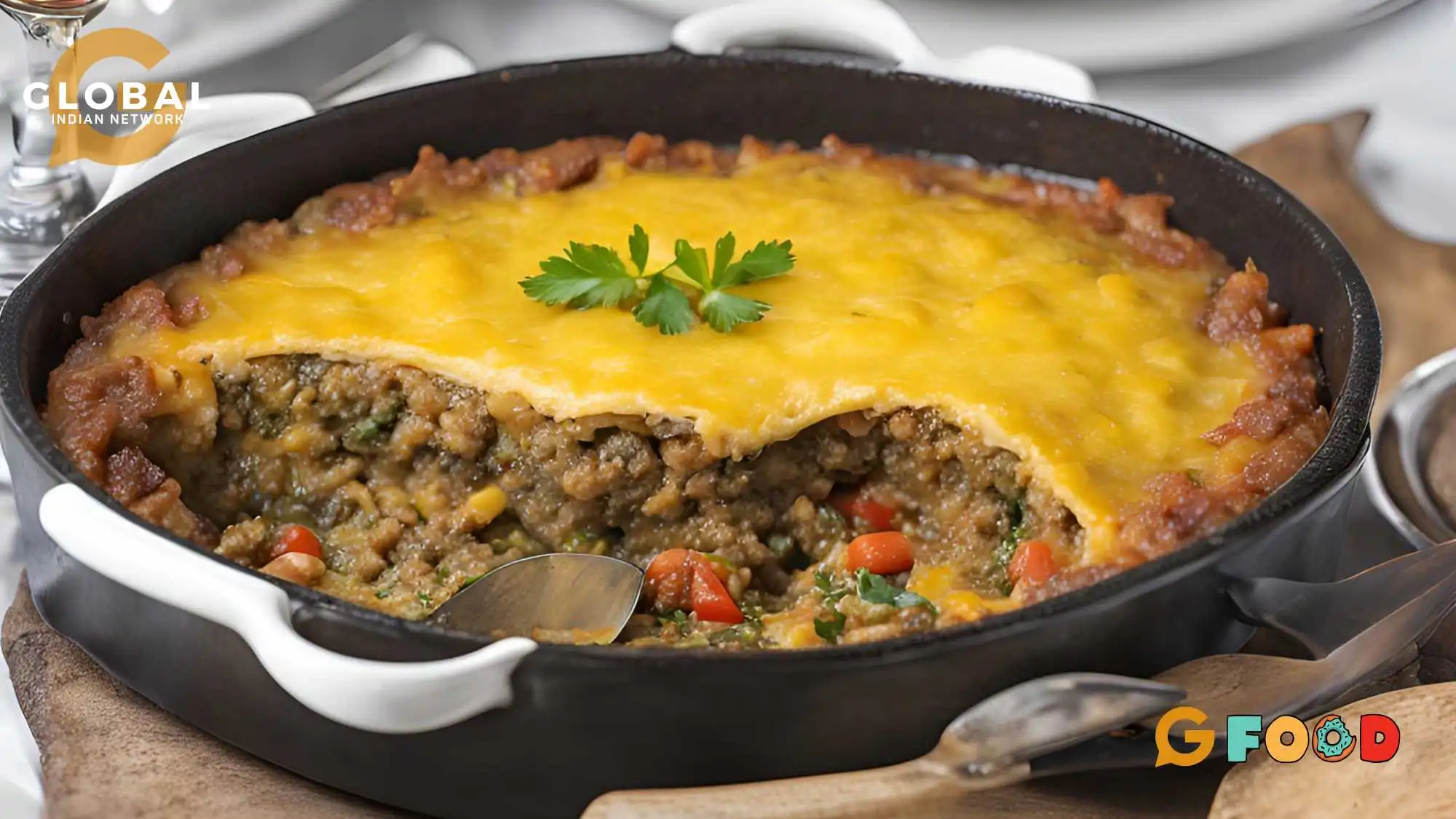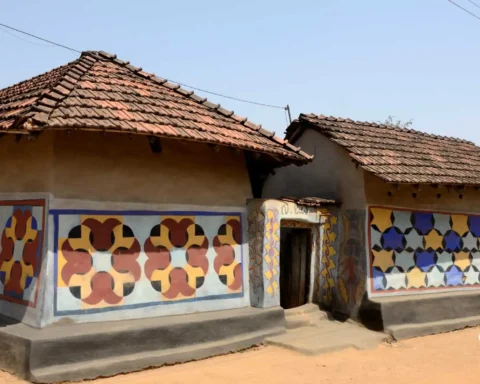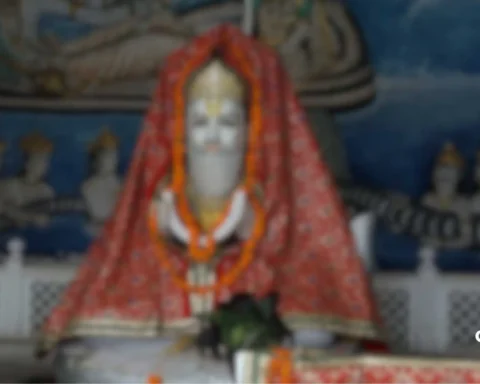South Africa is a country rich in diversity, boasting a tapestry of cultures woven together to create a unique and vibrant culinary landscape. In this article, we will take you on a flavorful journey through the different cultures in South Africa and their foods that define them. Get ready to tantalize your taste buds and expand your cultural horizons as we delve into the multifaceted world of South African cuisine.
Table of Contents
History of Settlements in South Africa
South Africa has a complex history of settlement and colonization by various groups. Here are some of the key settler groups in South Africa's history:
- Khoikhoi and San Peoples: These indigenous groups were the first inhabitants of the region, with a history dating back thousands of years. They were primarily hunter-gatherers and pastoralists.
- Dutch Settlers (Afrikaners): The Dutch East India Company established a refreshment station at Cape Town in the 17th century. This marked the beginning of European settlers, with Dutch settlers (later known as Afrikaners) who arrived and established farms.
- British Settlers: In the early 19th century, the British Empire took control of the Cape Colony. British settlers, often of English, Scottish, or Irish descent, began to arrive in significant numbers, further influencing the demographic and cultural makeup of the region.
- Slaves and Cape Malay Community: Slaves were brought to the Cape Colony, primarily from Southeast Asia, and they played a vital role in shaping South Africa's culture and cuisine. The Cape Malay community, in particular, is a vibrant cultural group with roots in this history.
- Indian Immigrants: Indian labourers were brought to South Africa as indentured servants in the late 19th and early 20th centuries. They brought their culinary traditions, particularly curry dishes, which have become a significant part of South African cuisine.
- Other European and Immigrant Groups: Besides the Dutch and British settlers, South Africa attracted immigrants from various European countries such as Germany, France, and Portugal. Each group contributed to the cultural diversity of the country.
- African Communities: Various African communities, including the Zulu, Xhosa, Sotho, and others, have lived in South Africa for centuries and played a significant role in the nation's culture and history.
- Chinese and Other Asian Communities: Small Chinese and other Asian communities have also contributed to South African culture and cuisine.
- Post-Apartheid Era and Migration: In the Apartheid period and post-apartheid era, South Africa has seen increased migration and settlement from various African countries and other parts of the world, further enriching the country's cultural landscape.
The history of South Africa is marked by a complex interplay of these settler groups, their interactions, and their influence on the country's culture, language, and society. This diversity is a defining characteristic of South African society today.
YOU MIGHT BE INTERESTED IN: In Pursuit of Justice: The Phoenix Riots of South Africa with Sham Maharaj
South African Culture
South African culture is a vibrant culture woven from the threads of diverse ethnic, racial, and linguistic backgrounds. Encompassing a rich mosaic of traditions, languages, and belief systems, it reflects a complex history of colonization, resistance, and eventual transition into a democratic nation. This dynamic culture embraces a wide array of customs, art forms, and rituals, showcasing the kaleidoscope of influences from indigenous peoples, European colonizers, Malay slaves, Indian labourers, and more.
African music and dance, such as the energetic rhythms of Zulu and Xhosa traditions or the captivating melodies of Choral music and Afrikaans folk songs, play a central role in South African culture. The country's cuisine is equally diverse, from hearty stews like boboties to fiery Indian curries and succulent braais (barbecues).
African literature, art, and sports, particularly rugby and soccer, are additional facets that contribute to the rich cultural identity of South Africa. Despite a history marked by adversity, South African Black culture stands as a testament to the resilience and unity of its people, making it a captivating and ever-evolving cultural landscape.
Literature
The literature of South Africa is a rich tapestry woven together by diverse cultural influences and historical dynamics. While indigenous Bantu-speaking people had a longstanding oral storytelling tradition, the arrival of European languages through colonization significantly reshaped the literary landscape.
Black literature in South Africa has been a powerful medium for Black writers to engage with issues of identity, resistance, and social change. Writers like Sol Plaatje, who authored "Mhudi" in 1930, and more contemporary figures like Zakes Mda have contributed to the vast body of Black literature that illuminates the complex narrative of the country.
South African literature grapples with themes of apartheid, race, identity, and the country's diverse cultural heritage, reflecting the nation's ongoing journey toward reconciliation and understanding. These oral traditions encompass various genres, including novels, poetry, short stories, and plays, each offering a unique perspective on the multifaceted South African experience.
History of South African Cuisine
South Africa's cuisine and cooking traditions have been significantly influenced by various settlers and immigrant groups throughout its history. Here's an overview of some of the significant settler groups and their contributions to South African cuisine:
The native Khoikhoi and San peoples had a significant influence on South African cuisine. They introduced staples like maize, sorghum, and indigenous vegetables, which are important components of the South African diet.
The Dutch East India Company established a refreshment station at the Cape of Good Hope in the 17th century. Afrikaners, descendants of Dutch settlers, contributed to South African cuisine with dishes like bobotie (spiced meat with an egg-based topping) and boerewors (a flavorful sausage). They also introduced the tradition of the "braai," or barbecue.
Slaves brought by the Dutch and the Cape Malay community, primarily of Southeast Asian and Indonesian descent, introduced aromatic spices and unique flavours to South African cuisine. Dishes like biryani, samoosas, and various curries reflect this influence.
British political life and colonial influence in the 19th century added elements like meat pies, roasted meats, and afternoon tea traditions to South African cuisine.
Indian labourers arrived in South Africa in the late 19th and early 20th centuries. They brought with them a rich array of spices and introduced curry dishes such as bunny chow, which have become integral to South African cuisine.
Portuguese explorers and traders introduced chilli peppers and other ingredients to South Africa, contributing to the country's love for spicy foods.
The South African population includes various African, European, and Asian immigrant groups, each adding unique flavours and culinary traditions to the country's cuisine. For example, the influence of Zimbabwean, Mozambican, and Congolese cuisine can be seen in certain regions.
In the post-apartheid era, South African cuisine has experienced a resurgence and revival of traditional dishes and ingredients while embracing international culinary trends. Focusing on sustainability, local sourcing, and innovative cooking techniques has become increasingly prominent among South Africans.
South African food history reflects the nation's remarkable diversity, history, and the unifying power of shared meals. It celebrates flavours, ingredients, and traditions that continue to evolve, making South African cuisine a tantalizing and ever-evolving culinary landscape.
Zulu Cuisine
Zulu cuisine is a reflection of the Zulu people's heritage, utilizing ingredients that are abundant in the region. Here are some key elements of Zulu cuisine:
Maize is a staple in Zulu cuisine and is often ground into a meal called "isigqulu," which serves as a base for many dishes. A popular Zulu dish is "Ujeqe," a steamed maize bread served with meat, vegetables, or gravy.
The Zulu people are skilled cattle herders, and meat is an essential part of their diet. Beef, goat, and chicken are commonly consumed, and they are often prepared using various cooking methods, including grilling, boiling, and stewing.
Vegetables like spinach, pumpkin, and various indigenous greens are used in Zulu cooking. These vegetables are typically prepared with spices and often served as side dishes or mixed with maize to create flavorful combinations.
Dairy products play a role in Zulu cuisine. Amasi, a fermented milk product similar to yoghurt, is widespread. It is often enjoyed on its own or used in cooking. This traditional Zulu beer is brewed from sorghum and maize. It has a unique flavour and is commonly consumed during social gatherings, ceremonies, and rituals.
Zulu cuisine utilizes a blend of indigenous herbs and spices to add flavour to dishes. These may include ingredients like garlic, ginger, and chillies. Some traditional Zulu dishes include "Inyama yenhloko" (cow's head), "Umsila Wenkomo" (oxtail stew), and "Uphuthu" (crushed maize). Food in Zulu culture often holds deep cultural significance. It is used in rituals, celebrations, and ceremonies to foster a sense of community and to honour traditions.
While Zulu cuisine maintains its traditional roots, contemporary Zulu chefs are incorporating modern cooking techniques and presentation styles to showcase the richness of their heritage in an evolving culinary landscape.
Zulu culture and cuisine are intertwined, and Zulu culinary traditions provide a glimpse into the daily lives and cultural practices of this vibrant South African community. The emphasis on traditional ingredients and communal dining fosters a strong sense of identity and togetherness among the Zulu people, making their cuisine an integral part of their cultural heritage.
TUNE INTO: Unveiling South Africa's Tumultuous Past with Ela Gandhi
Xhosa Cuisine
Xhosa cuisine reflects the resourcefulness of a people historically associated with agriculture and cattle herding. Their culinary traditions are closely tied to their rural way of life, and many Xhosa dishes are simple but flavorful. Here are some key elements of Xhosa cuisine:
Just like in many other South African cultures, maize plays a pivotal role in Xhosa cuisine. "Umngqusho" is a famous Xhosa dish made from maize and sugar beans, often cooked with vegetables and spices.
The Xhosa people traditionally raised cattle, and meat is an integral part of their diet. Beef and mutton are commonly consumed, and they are often prepared as stews, grilled meats, or roasted. "Inyama yeenkukhu" is a chicken stew prepared with onions, tomatoes, and spices, while "Inyama yenhloko" is a dish made from the cow's head, an important delicacy often reserved for special occasions.
Vegetables like spinach, pumpkin, and other indigenous greens are used in Xhosa cuisine, often prepared with aromatic spices and served alongside maize dishes.
"Ujeqe" or dumplings made from maize meal are commonly served as a side dish. They are similar to those in Zulu cuisine and are often paired with stews. Milk and dairy products are significant in Xhosa cuisine, with sour milk (amasi) being a traditional favourite. Xhosa culture incorporates bread into its cuisine, particularly "Ingqina," a bread traditionally prepared using maize and wheat.
Xhosa cuisine often employs local herbs and spices, such as wild garlic and chilli peppers, to enhance the flavours of their dishes. Food in Xhosa culture often holds deep cultural significance and is an integral part of ceremonies and celebrations. For example, the slaughtering of a cow holds special cultural significance, symbolizing important rites of passage. Modern Xhosa chefs are blending traditional Xhosa ingredients and flavours with contemporary cooking techniques, presenting their culture's rich culinary heritage in new and innovative ways.
Xhosa culture and cuisine are inextricably linked, with traditional dishes serving as a reflection of their way of life, history, and values. The emphasis on locally sourced ingredients, communal dining, and the use of culinary traditions in cultural practices make Xhosa cuisine a testament to the cultural richness and traditions of the Xhosa people.
Indian Culture and Cuisine
Indian culture and cuisine have left a significant and enduring impact on South Africa, thanks to the migration of Indians to the country during the 19th and early 20th centuries. Here is an overview of Indian culture and cuisine in South Africa:
The Indian community in South Africa is one of the largest and most culturally rich immigrant groups. They have contributed to the cultural tapestry of South Africa in various ways, including:
The Indian community has brought diverse religious practices to South Africa, with Hinduism, Islam, Christianity, and Sikhism being the major religions. Temples, mosques, and gurdwaras are prevalent across the country.
Indian official languages, primarily Tamil, Telugu, Hindi, and Gujarati, are spoken within the community, contributing to the linguistic diversity of South Africa. Indian cultural festivals, including Diwali (the Festival of Lights), Eid, Holi, and Navratri, are celebrated enthusiastically. These festivals include music, dance, and art, adding vibrancy to the cultural landscape.
Traditional Indian clothing like sarees, kurta-pajamas, and turbans is worn on special occasions and celebrations. These outfits are known for their vibrant colours and intricate designs.
Indian cuisine is a defining feature of South African food culture. It has significantly influenced the country's culinary landscape, resulting in a unique fusion of Indian flavours with local ingredients and traditions. Key elements of Indian cuisine in South Africa include:
Indian curries, often spiced with ingredients like cumin, coriander, and garam masala, are a cornerstone of South African Indian cuisine. Dishes like chicken curry, lamb curry, and vegetable curry are widely enjoyed. Biryani, a fragrant and flavorful rice dish typically made with meat or vegetables, is a favourite in South African Indian cuisine. It's often served on special occasions and festivals. Indian bread, including roti (unleavened flatbread) and naan, is widely consumed, often used to scoop up curries or served with grilled meats.
Samosas are fried or baked pastry pockets filled with spiced potatoes, peas, and sometimes meat and are popular snacks and street food items in South Africa. Various chutneys and pickles, like mango chutney and lime pickle, are used to add a burst of flavour to South African Indian dishes.
Indian desserts like gulab jamun (deep-fried milk dumplings soaked in sugar syrup), jalebi (syrup-soaked spirals), and barfi (sweet confections) are enjoyed during celebrations. Indian spiced tea, or masala chai, is a popular beverage in South Africa and is often served in local eateries. Indian-inspired street food, such as bunny chow (hollowed-out bread filled with curry) and samoosa chaat (samosa salad), is an integral part of South African street food culture.
The fusion of Indian culinary traditions with local ingredients and South African cooking techniques has given rise to a unique and flavorful South African Indian cuisine cherished by people of all backgrounds. It has become an integral part of South Africa's culinary identity.
Lesser Known Cuisines
While South African cuisine is predominantly influenced by its major cultural groups, such as Zulu, Xhosa, Cape Malay, and Indian, some lesser-known and regional cuisines of East Africa are not as prominent but still offer unique flavours and dishes. These lesser-known cuisines include:
Khoisan Cuisine: The Khoisan, South Africa's indigenous hunter-gatherer people, have a cuisine based on game meats like ostrich and gemsbok. They also use a variety of edible plants and herbs to create traditional dishes.
Boesman Kos (Bushmen Food): This cuisine is linked to the San people (Bushmen), another indigenous group in South Africa. It features game meats and traditional cooking methods like roasting and drying.
Coloured Cuisine: The Coloured community, especially in the Western Cape, has its unique cuisine influenced by the intermingling of various cultural groups, including the Dutch, Indonesian, and African. Dishes like bredies (stews) and pickled fish are popular in Coloured cuisine.
Afrikaner Cuisine: While Afrikaner cuisine is relatively well-known, it is less prominent than other South African cuisines. Traditional Afrikaner dishes include boerewors (sausage), melktert (milk tart), and potjiekos (a slow-cooked stew).
Cape Dutch Cuisine: The Cape Dutch, or Afrikaans-speaking settlers, have their culinary traditions. Dishes like bobotie, koeksisters (sweet syrup-coated pastries), and various forms of "bredies" are part of this cuisine.
The cuisine of the Karoo: The semi-arid region of the Karoo in South Africa has its unique cuisine influenced by the harsh environment. Karoo lamb and mutton are especially prized, and dishes like "skilpadjies" (lamb's liver wrapped in netvet) are local delicacies.
Portuguese Influence: Portuguese immigrants have impacted South African cuisine, particularly in coastal regions like Mozambique. Dishes like peri-peri chicken and spicy grilled sardines reflect this influence.
Eastern European Jewish Cuisine: South Africa has a significant Jewish population, and Eastern European Jewish culinary traditions, including dishes like gefilte fish and cholent, have influenced local Jewish cuisine.
These lesser-known cuisines may not be as widespread or well-documented as some of the more prominent South African culinary traditions, but they contribute to the country's diverse and multifaceted food culture. Exploring these regional and less-prominent cuisines can provide a deeper understanding of South Africa's rich culinary landscape.
Popular Dishes
South Africa offers a delectable array of popular dishes, each with a unique flavour and cultural influence. Here are some well-loved South African dishes and a brief description of what they are made of:
- Bobotie is a spiced, baked minced meat dish, traditionally made with ground beef or lamb. It's mixed with curry spices and dried fruits and topped with a custard made from beaten eggs and milk. The dish is then baked until the custard sets.
- Braai is the South African equivalent of a barbecue. It typically includes grilled meats like boerewors (spiced sausage), lamb chops, and chicken, seasoned with spices and often served with sides like maize meal porridge (pap) and chutney.
- Bunny chow is a popular street food dish that consists of a hollowed-out loaf of bread filled with curry. It has various curry options, such as chicken, mutton, or beans.
- Malva pudding is a sweet and sticky dessert made with apricot jam, sugar, and eggs. It's served warm and often topped with a creamy sauce. It's a favourite comfort food for many South Africans and is a Dutch import.
- Snoek is a fish often enjoyed with "patat," which refers to sweet potatoes. The fish is grilled or smoked, and the sweet potatoes can be roasted or fried.
- Chakalaka is a spicy vegetable relish made with ingredients like tomatoes, onions, carrots, and chilli peppers. It's seasoned with various spices and often served as a side dish or condiment.
- Koeksisters are syrup-coated pastries that are twisted or braided before being deep-fried. They are sweet and syrupy, with a slightly crispy exterior and soft interior.
- Pap is a staple in South African cuisine, made from maize meal and served as a porridge or side dish. "Wors" refers to boerewors sausages, often enjoyed with pap and a tomato and onion sauce.
- Biltong is a popular snack made from dried and cured meat, typically beef. It's similar to jerky but seasoned with South African spices and flavours, making it a savoury treat.
- Potjiekos is a slow-cooked stew prepared in a cast-iron pot. It includes a variety of ingredients such as meat, vegetables, and spices and is simmered over an open flame, producing a flavorful and hearty dish.
These popular South African dishes showcase the country's diverse culinary influences, from indigenous traditions to the flavours brought by various settlers and immigrants. Each dish offers a unique and delicious taste of South African culture and heritage.
LISTEN TO THIS PODCAST: Uncovering the Untold Narratives of South Africa with Rajesh Gopie
Conclusion: Different Cultures in South Africa and Their Food
It's a reminder of the incredible diversity that makes South African cuisine a truly unique and delightful experience. So, whether you're savouring the spice of a Durban curry or tucking into a hearty potjiekos stew, the different cultures in South Africa and their food will leave you wanting more. Cheers to the vibrant culinary traditions that unite a diverse nation!'
FAQs
What is the traditional food of South Africa?
The traditional food of South Africa includes dishes like pap (maize porridge), boerewors (spiced sausage), and umngqusho (samp and beans), often served with a variety of meats and vegetable-based sides, reflecting the country's diverse culinary heritage. These staple foods are an integral part of South African culture and have been enjoyed for generations.
What is the most popular culture in South Africa?
The most popular culture in South Africa is a diverse and multifaceted blend of indigenous African cultures, followed by Western and European influences, particularly from the Bantu-speaking tribes, Zulu and Xhosa. This cultural amalgamation results in a rich tapestry of traditions, languages, art forms, and a dynamic culinary landscape.
What are the 3 main cultures in South Africa?
The three main cultures in South Africa are Zulu, Xhosa, and Afrikaner. Zulu and Xhosa cultures are rooted in indigenous traditions, while Afrikaner culture has Dutch origins and played a significant role in the country's history.
What is the most popular South African food?
One of the most popular South African foods is "Braai," which refers to the country's vibrant barbecue culture, featuring grilled meats like boerewors and a variety of side dishes. Another favourite is "Bobotie," a spiced, baked, minced meat dish with a sweet custard topping.









